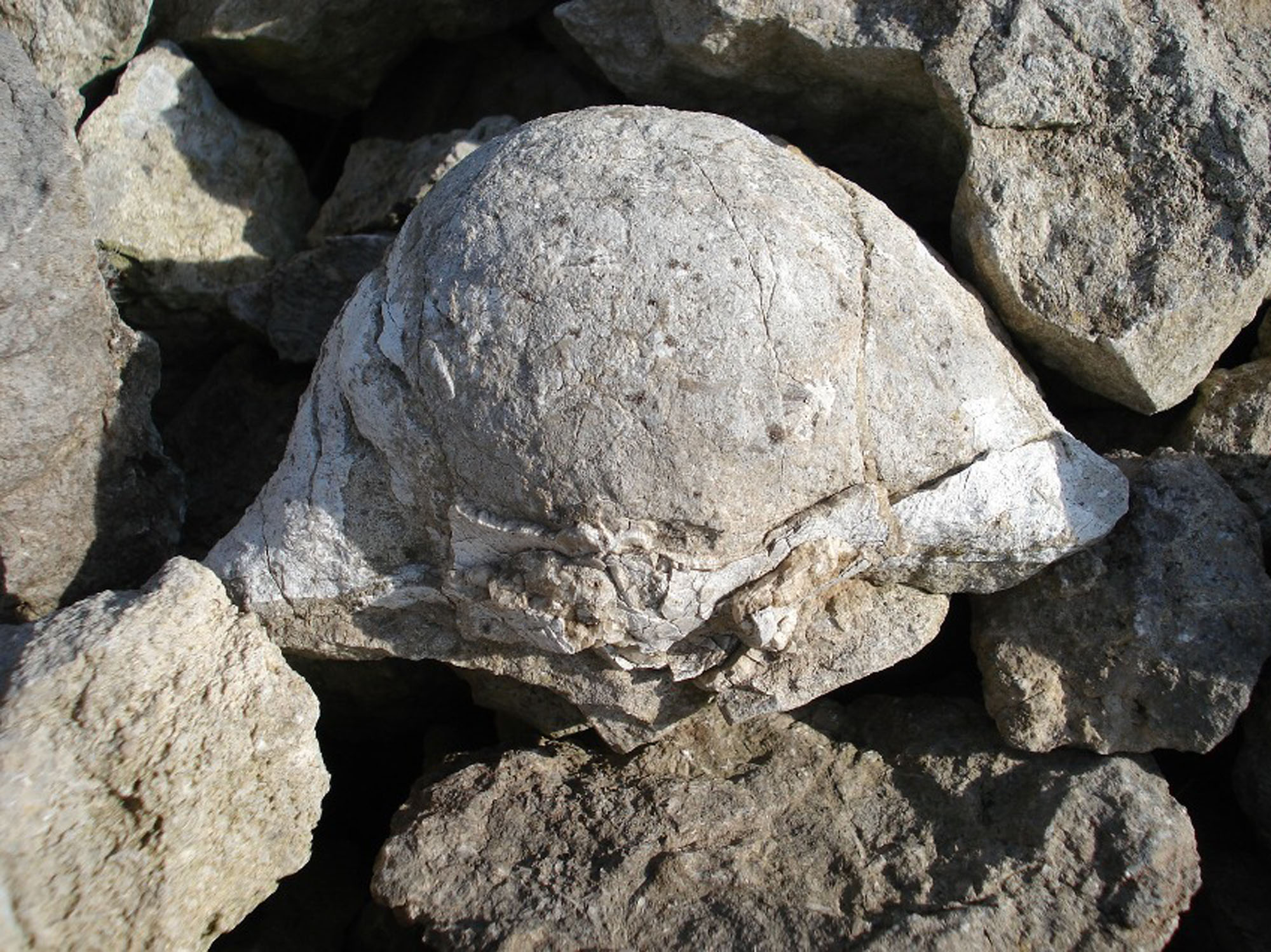The scenery of the coast north of Caim is beautiful. Moreover, excellent fossil corals can be observed in situ and found as wave-rounded pebbles here. Brachiopods are especially abundant.
DIRECTIONS
♦ Parking can be found at or near to Caim, which is at the most eastern tip of Anglesey.
♦ When you reach Caim, you will find a small electricity substation on a minor road leading to a dead end at Pentir Cottage (which is marked on maps).
♦ Walk to the gate next to the cottage. When in the field, take a line at about 45 degrees to and from the wall and fence, so that you are heading into the middle of the field at an angle.
♦ Once over the rise in the middle of the field, you will see two spits of land ahead of you. Both access points are on the left side of these.
♦ Ref: SH 62252 81520
PROFILE INFO
FIND FREQUENCY: ♦♦♦♦ – Certain strata are packed with coral fossils, which have been weathered proud of their matrix. Corals can also be found loose among the pebbles of the beach. Brachiopods can be observed in situ in a limestone outcrop at the top of the cliff and also as worn cross-sections at beach level.
CHILDREN: ♦♦♦ – In places, the beach is covered by large boulders and the headlands are steep. In addition, the footpath down can be difficult. Therefore, this site is not recommended for children.
ACCESS: ♦♦ – There is a 500m walk from Caim to the beach. Once on the beach, some climbing over boulders and ledges may be required. Caim is also quite hard to find and parking can be difficult.
TYPE: – Fossils can be found here both in situ in rock ledges and also loose as wave-rounded pebbles.
FOSSIL HUNTING
Fossils can be found for a few hundred metres to the east and a couple of kilometres to the west along this stretch of coast. However, the most impressive fossils – the corals – are found just at the end of the path down to the beach.
However, one of the best places to look for fossils along this stretch of coast is on top of the headland that you come to at the end of the walk from Caim. Within minutes of investigating the rock here, you should have found a number of excellently preserved coral specimens standing proud of their matrix. Please do not try to remove these. Rather, leave them for others to see.
A little lower down, there is a layer of rock that is almost entirely composed of coral fossils. This can be seen well at the base of the next headland to the west. The pebbles and cobbles that make up the beach also contain fossils. Brachiopod sections and attractive corals can frequently be found. With some searching, you should be able to collect quite a few of these.
At the top of the cliff next to the path, there is a limestone outcrop, where large brachiopods can be observed. However, do not attempt to extract these.

GEOLOGY
The Carboniferous Limestone Series found here is Dinantian (Lower Carboniferous) from the Visean Stage, and part of the Clwyd Limestone Group.
It is between 346.7–330.9 Mya and the cliffs show a range of limestone facies, with sandstone and mudstone units. Characteristic of the coastline here, some dolomitisation is present (a process by which dolomite is formed, when magnesium ions replace calcium ions in calcite) but the fossils include beautiful fossil corals in situ in the cliffs and as wave worn pebbles on the beach. Horn corals can also be found, along with silicified brachiopods and bivalves.
The geology here records the initiation and growth of a carbonate platform along the northern flank of the Wales-Brabant Massif.


SAFETY
As this is a remote location, it is best to visit with other people. A mobile phone should also be taken and someone should be told where you are going and when you expect to be back. Knowledge of tide times is essential and make sure you visit on a retreating tide. Take care when climbing ledges or boulders.
EQUIPMENT
You should bring a decent rucksack in which to store your finds. Packing material and bags should also be brought. This is a remote location, so you should take enough to drink with you and also a mobile phone. A camera will come in handy for photographing the corals.
ACCESS RIGHTS
This site is an SSSI. This Special Site of Scientific Interest, means you can visit the site, but hammering the bedrock is not permitted.
It is important to follow our ‘Code of Conduct’ when collecting fossils or visiting any site. Please also read our ‘Terms and Conditions‘
LINKS
♦ Buy Fossils, Crystals, Tools
♦ Location Discussions
♦ Deposits Magazine
♦ Join Fossil Hunts
♦ UK Fossils Network















































